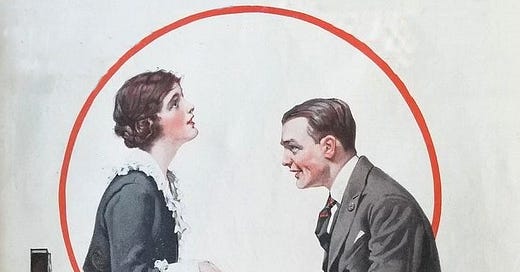The Ouija board. It’s a name that whispers of mystery, a hint of the uncanny. A flat surface, often adorned with the alphabet, numbers 0-9, and the simple words “yes,” “no,” “hello,” and “goodbye.” Add a planchette – that small, often heart-shaped piece of wood or plastic – and you have a tool that has captivated, intrigued, and sometimes terrified people for over a century.
The history of the Ouija board is a fascinating mix of the ordinary and the otherworldly. While divination practices have existed for millennia, the Ouija board as we recognize it today emerged in the late 19th century, right in the thick of the Spiritualism movement. It was a time when communicating with the dead was a popular obsession, and the Ouija board offered a seemingly direct line to the other side.
The origin of the name “Ouija” is itself a bit of a puzzle. Some say it’s simply a combination of “oui” (French for “yes”) and “ja” (German for “yes”). But the more compelling story involves a medium, Helen Peters, and her brother-in-law, Elijah Bond. In 1890, during a seance, the planchette is said to have spelled out “Ouija,” which was then interpreted as meaning “good luck.”
While Hasbro now owns the Ouija board, its early history involves figures like Elijah Bond, who secured the patent, and William Fuld, whose story is a cautionary tale in itself. Fuld, an early investor, made a considerable fortune from the Ouija board’s popularity. Ironically, his unwavering belief in the board’s guidance ultimately led to his tragic demise. In 1927, while overseeing work on his factory roof, Fuld fell. He clung to a window sill, but the window, as if by some unseen hand, slammed shut, sending him tumbling to his death. And then, like something out of Final Destination, A fractured rib, a consequence of a jolt in the ambulance, pierced his heart, sealing his fate.
The Ouija board’s popularity skyrocketed in the late 19th and early 20th centuries, fueled by the Spiritualist movement and later, by tragedies like World War I and the 1918 influenza pandemic. People sought solace, answers, and connection, and the Ouija board seemed to offer a tangible link to the other side. It became a popular parlor game, a form of entertainment, but also a serious tool for those seeking spiritual contact.
Then came The Exorcist. This 1973 horror masterpiece irrevocably changed the Ouija board’s image, transforming it from a relatively benign game into a symbol of demonic possession and occult danger. The film’s graphic depictions of demonic activity linked to the Ouija board solidified its reputation as a gateway to evil.
But is it really? Skeptics point to the ideomotor effect, a psychological phenomenon where unconscious muscle movements can cause the planchette to move, creating the illusion of an external force. Participants, often influenced by suggestion and expectation, may unknowingly guide the planchette themselves. Michael Faraday identified this effect way back in 1853 while studying table turning, a fascinating parallel to the Ouija board craze.
Despite rational explanations, the Ouija board continues to be associated with strange and unsettling experiences. Stories of hauntings, possessions, and even crimes linked to the board persist. There are tales of messages from deceased loved ones, warnings from spirits, and even instructions to commit violence. The Enfield Poltergeist case in the 1970s, where two young sisters claimed to be tormented by a malevolent entity, further cemented the Ouija board's reputation as a dangerous tool. Even paranormal investigators like Ed and Lorraine Warren linked the intensified activity to the Ouija board.
The Ouija board has even made appearances in courtrooms. Jurors have consulted Ouija boards during deliberations, and defendants have claimed they committed crimes under the influence of spirits contacted through the board. The 1994 case of Stephen Young in London, whose murder conviction was initially overturned after it was revealed jurors used an Ouija board, highlights the strange influence this object can have. These cases raise complex questions about the nature of belief and the power of suggestion.
The Ouija board's influence extends to literature and the arts. Author Emily Grant Hutchings claimed her 1917 novel, Jap Herron, was dictated to her by the spirit of Mark Twain through a Ouija board. Leonora Curran also claimed to have channeled a spirit named Patience Worth for over 20 years, resulting in numerous literary works. There are even stories of individuals claiming the Ouija board instructed them to commit murder, like the case of Clothilde Marchand in 1930, where a woman was convinced by a Ouija-influenced acquaintance to kill Marchand. And the chilling story of Mattie Turley, who in 1933, shot her father twice in the back, claiming a message from the spirit world via Ouija board, underscores the potential for real-world consequences. More recently, the Slender Man stabbing case, though not directly tied to a Ouija board, illustrates how powerful narratives, amplified by the internet, can influence vulnerable individuals.
The Ouija board occupies a unique place in our culture. It’s a toy, a game, a tool for spiritual exploration, and for some, a gateway to the unknown. It embodies our fascination with the mysteries of life and death, our longing for connection with something beyond our everyday experience. Whether it’s a portal to the spirit world or simply a reflection of our own subconscious, the Ouija board continues to intrigue, to terrify, and to provoke questions about the nature of reality itself. From ancient divination practices to modern-day toy stores, the Ouija board’s journey reflects our enduring quest to understand the wyrd.
Check out our episode on Ouija board here



